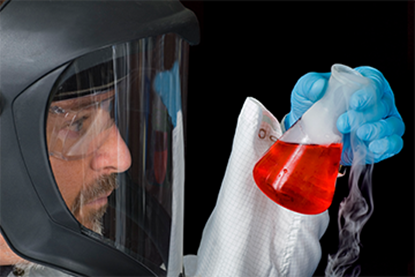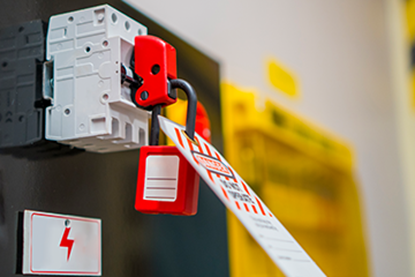You have no items in your shopping cart.
Awareness Courses
Occupational accidents and work-related diseases cost billions of dollars in lost productivity every year. If your employees face workplace hazards, you need to know the risks. UL EHSS has the training content you need to keep workers healthy, safe, and on-the-job.
Our Awareness modules are 15-20 minute overviews of each topic.
Hydrogen Sulfide (H2S) Awareness
You notice the faint smell of rotten eggs and see a co-worker collapse. Do you know what could be happening? How will you get help for your co-worker and avoid becoming another victim? In this course, you will get the answers to these questions. You will learn about the characteristics and dangers of hydrogen sulfide (H2S) and what to do if you suspect it is present. This training is ideal for workers in general industry, manufacturing and construction.
$29.95
Incident Investigation Awareness
We have to look at what we are doing and figure out how we can improve. That is why we have incident investigation and causal analysis! This course will explain how you can turn safety incidents into opportunities. You will learn about how to gather information, find underlying causes and take corrective actions. This course is intended for all industries and employees, including managers.
$29.95
Industrial Ergonomics Awareness
Jobs in an industrial environment can be physically demanding. Preventing work-related musculoskeletal problems depends on an ergonomically sound work environment, good work practices and employee awareness. This course will introduce common risk factors and methods to prevent musculoskeletal injury. Ideal learners include all industrial employees.
$29.95
Industrial Hygiene Awareness
Industrial hygiene is vital. By anticipating, recognizing and managing conditions that may expose people to workplace contaminants and physical agents, we can prevent harm to people's health. This course will teach you what industrial hygiene is, what it targets, and how it works. It is ideal for all employees and supervisors.
$29.95
Lab Safety Awareness
A laboratory safety program depends on participation and cooperation from every employee. This course describes common hazards associated with laboratory environments and introduces ways to control and limit chemical exposure. Ideal learners are any employee who works in a laboratory environment.
$29.95
Ladder Safety Awareness
Obviously, falling off a ladder can injure you. But did you know that falling just 4 feet (or 1 meter) can actually kill you? If there is ever a chance you will use a ladder at work, you need to use it safely. This program covers the types of ladders as well as guidelines for proper ladder safety and inspection. Ideal learners include all employees who use ladders.
$29.95
Laser Safety Awareness
Lasers can present a variety of potentially serious hazards, including hazardous biological or chemical fumes given off by materials being lased and injury to the eyes and the skin from laser radiation. Lethal electrical and fire hazards can also be present with high-powered lasers. This course outlines the hazards that lasers present as well as how to work safely with and around them.
$29.95
Latex Allergy Awareness
Many workers routinely use latex products in their everyday work. Even people who have never had a reaction before could begin to develop symptoms. By reducing your exposure to latex and detecting latex allergy symptoms early, you can prevent long-term health effects. Take this course to learn what natural rubber latex is, where you may find it and how to recognize reactions to it. This course is ideal for all learners.
$29.95
Lithium-Ion Battery Awareness
Lithium-ion batteries, like the ones that power your portable electronics, are finding favor over traditional lead-acid batteries. These batteries offer many advantages but pose huge risks if not handled correctly. Take this course to make yourself aware of how to safely use lithium-ion batteries on and off the job. This course is ideal for everyone and all industries.
$29.95
Lockout/Tagout Awareness
Energy powers machines and industrial systems. Lockout/tagout procedures neutralize hazardous energy and prevent equipment startup during servicing, maintenance and installation activities. Take this course to learn how lockout/tagout helps ensure workplace safety. Ideal learners are personnel working where lockout/tagout occurs. Those who work under lockout protections also benefit from refresher information provided in this course.
$29.95
Materials Handling and Storage Awareness
There are hundreds of thousands of materials handling accidents every year, ranging from small splinters, cuts or scrapes, to crushed fingers, hands and feet and even deaths. Through proper precautions, you can help prevent these incidents. Ideal learners are all employees.
$29.95
Office Ergonomics Awareness
We have all felt aches and pains from bad posture, repetitive work, and sitting or standing in one position for extended periods. Working in an office can take a toll on your muscles, but proper ergonomics can make you more comfortable and efficient. The goal of this course is to assist you in evaluating and modifying your office work environment to reduce ergonomic risk. Ideal learners include office workers.
$29.95
Office Safety Awareness
Although accidents involving office personnel generally occur less frequently than mishaps to industrial workers, they do still occur and can result in serious injuries and even death. Everyone is responsible for office safety. This awareness course provides information you need to work safer in your office environment. Ideal learners are all office workers.
$29.95
Overhead and Gantry Crane Safety Awareness
Anyone who works with cranes knows not to underestimate the daily risk of collapse, electrical accidents, falls and other serious incidents. The power that makes overhead, gantry and similar cranes so useful also makes them dangerous. By properly operating the cranes with which you work, you can protect yourself and your co-workers. Ideal learners are crane operators.
$29.95
Personal Protective Equipment (PPE) Awareness
Workplaces are designed to be relatively free from hazards. Hazards that cannot be eliminated are guarded to keep workers away. Workers wear their own form of guarding, or personal protective equipment (PPE), as a final layer of protection against workplace hazards. This course is ideal for all workers who use PPE.
$29.95
Pandemic Awareness
When an outbreak or pandemic is in the news, there is no need to panic. There are specific things you can do to protect yourself and those around you from infection. Take this course to learn about what to look for and what to do during outbreaks and pandemics. This course is ideal for all learners.
$29.95
Preventing Slips, Trips and Falls Awareness
At best, slipping and tripping is embarrassing. Often, it leads to strains and sprains. At worst, it causes serious injury or even death. Preventing slips, trips and falls is easy, but often ignored in the daily routine of trying to get work done quickly and efficiently. This course defines slips, trips and falls and details how you can avoid them. Ideal learners include all employees.
$29.95
Recognizing Electrical Hazards Awareness
This course explains how and why electricity is dangerous so that employees may recognize when hazards are present. It is intended for workers in all industries.
$29.95


















